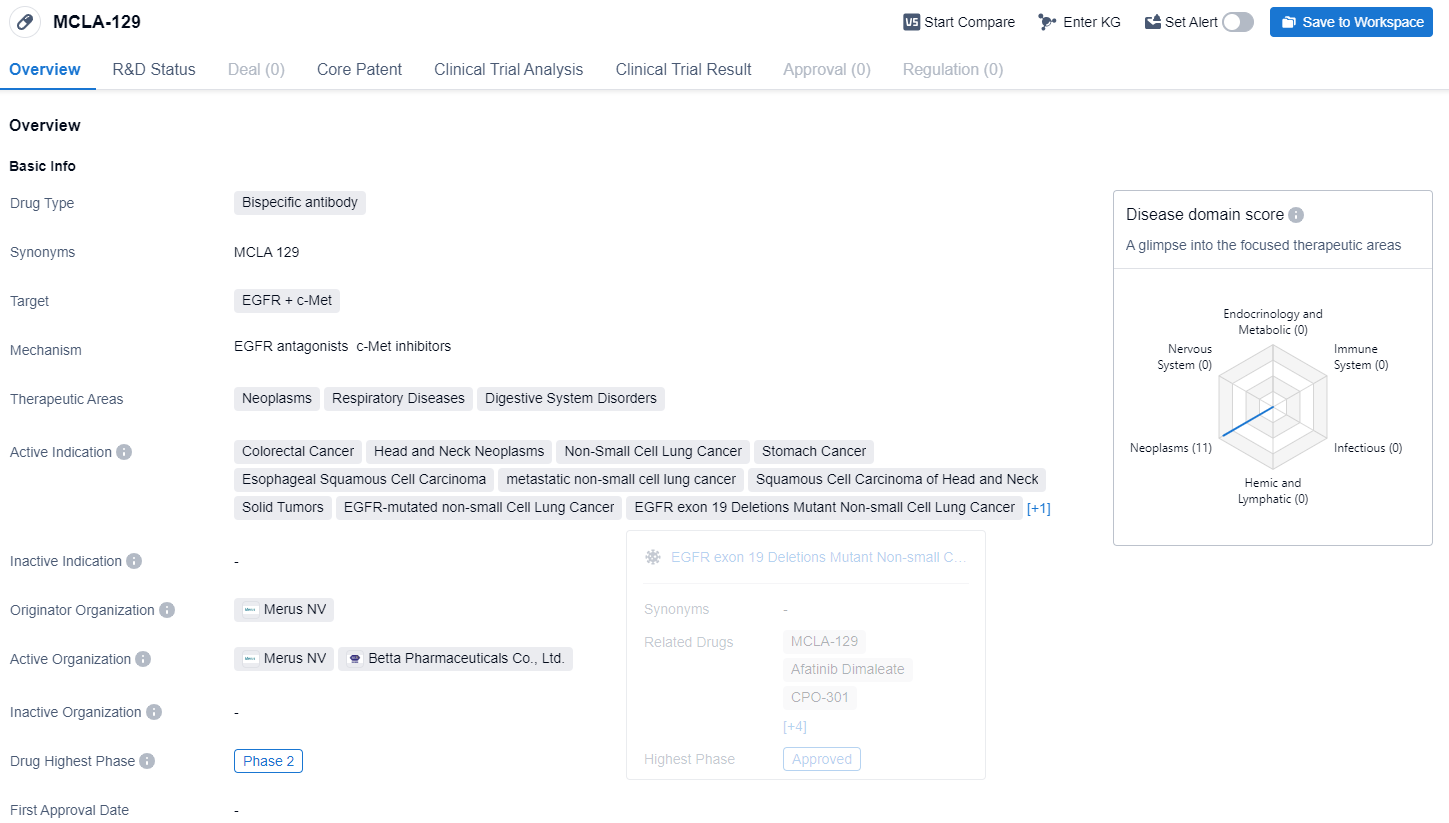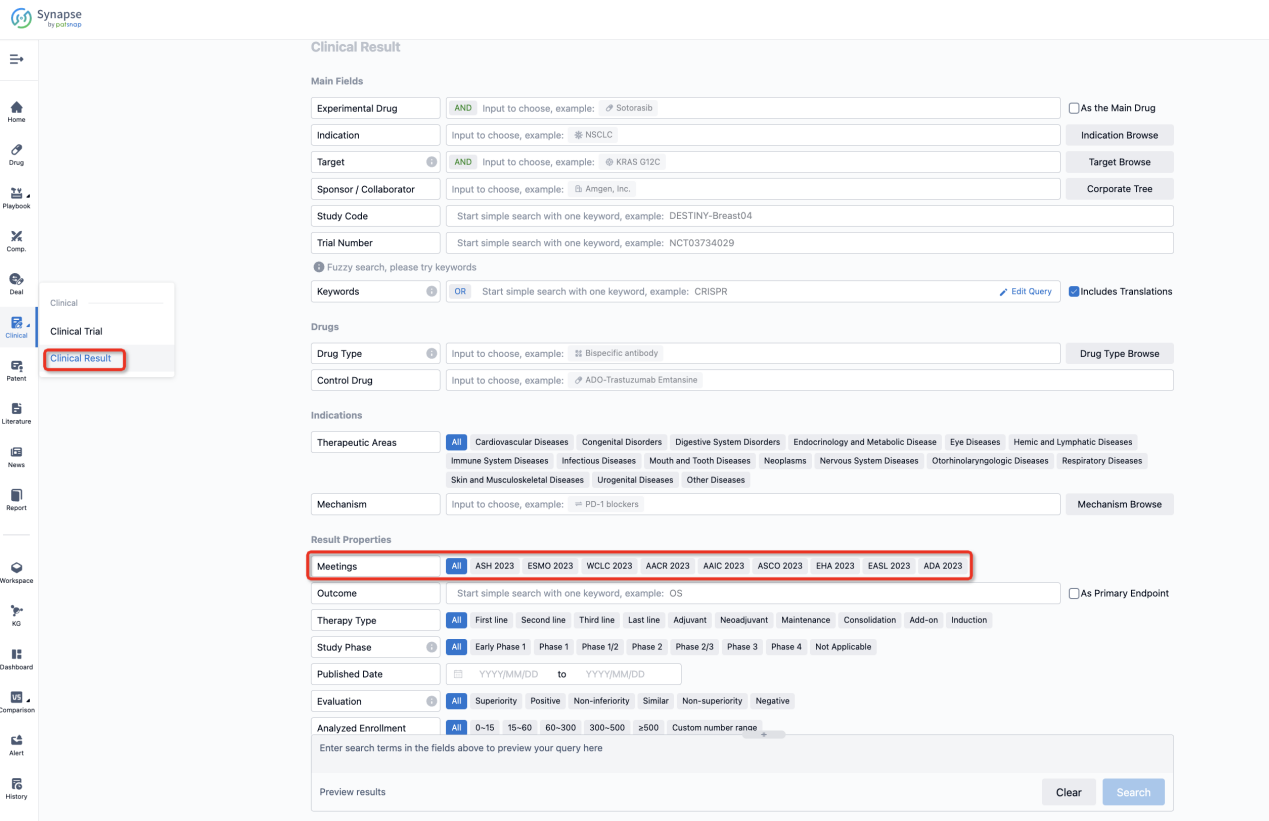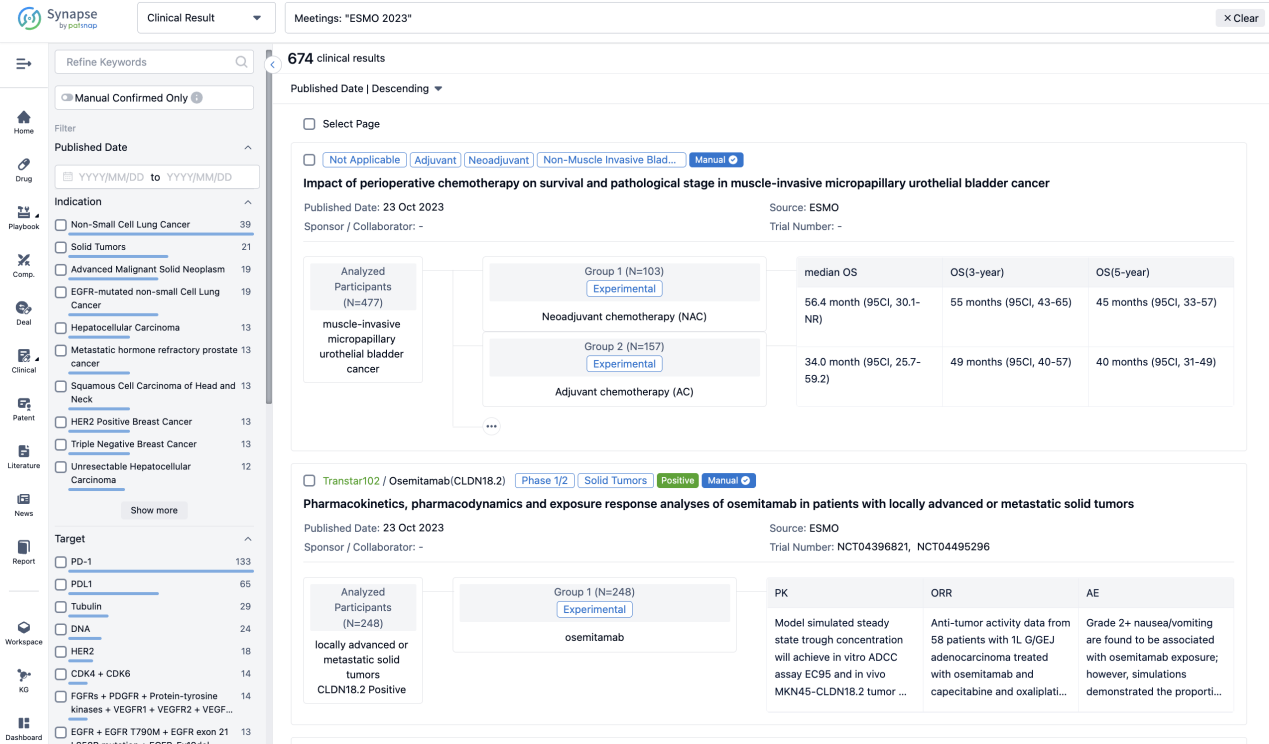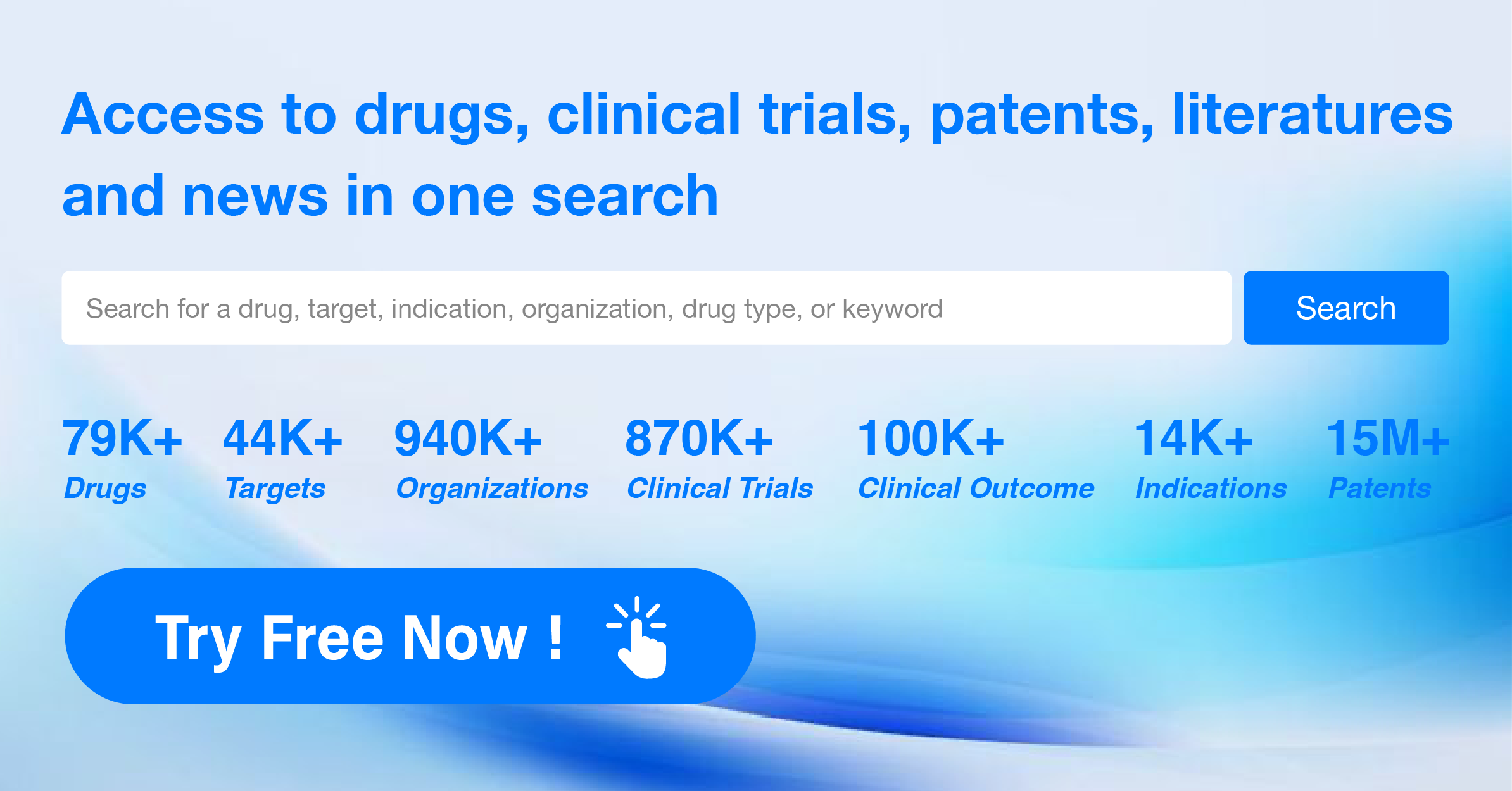An analysis of MCLA-129's R&D progress and its clinical results presented at the 2023 ESMO_ASIA Annual Meeting
On 3 Dec 2023, the latest clinical result of MCLA-129, an anti-EGFR/c-MET bispecific antibody, for the treatment on non-small cell lung cancer was reported in 2023 ESMO_ASIA.
MCLA-129's R&D Progress
MCLA-129 is a bispecific antibody drug that targets both EGFR (epidermal growth factor receptor) and c-Met. The therapeutic areas that MCLA-129 aims to address include neoplasms (abnormal growth of cells), respiratory diseases, and digestive system disorders. Specifically, it is being investigated for its potential in treating colorectal cancer, head and neck neoplasms, non-small cell lung cancer, stomach cancer, esophageal squamous cell carcinoma, metastatic non-small cell lung cancer, squamous cell carcinoma of the head and neck, solid tumors, EGFR-mutated non-small cell lung cancer, EGFR exon 19 deletions mutant non-small cell lung cancer, and EGFR exon 21 substitution mutant non-small cell lung cancer.
According to the Patsnap Synapse, MCLA-129 is currently in Phase 2 of clinical trials globally. And the clinical trial distributions for MCLA-129 are primarily in the United States, China and France. The key indication is Solid Tumors.
Detailed Clinical Result of MCLA-129
This non-randomized, parallel assignment, open-labeled clinical trial (NCT04868877) was aimed to investigate the efficacy and safety of MCLA-129 combined with osimertinib, as first-line therapy or after progression on osimertinib in NSCLC, in for advanced melanoma.
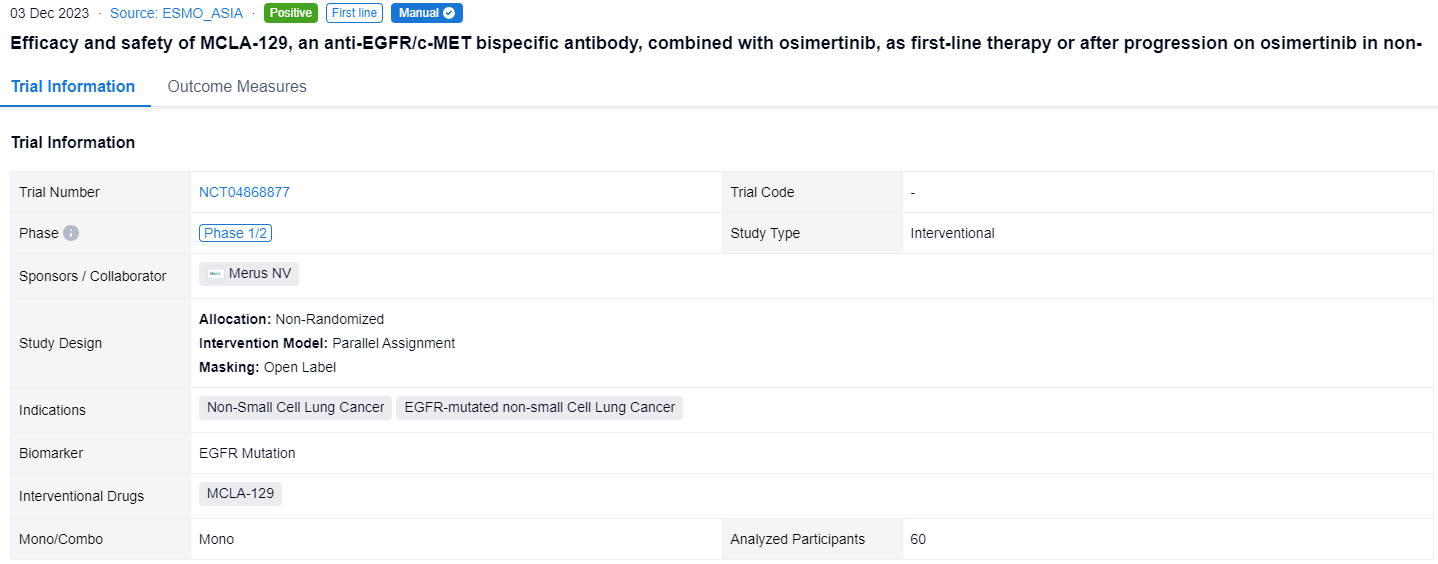
In this study, patients (pts) with advanced/metastatic EGFRmut NSCLC who were treatment-naïve or progressed on osimertinib were included. Pts received MCLA-129 1500 mg IV Q2W with 28 day cycles and osimertinib 80 mg QD PO, until disease progression or unacceptable toxicity. Tumor imaging was conducted Q8W. Primary endpoint: investigator-assessed ORR (RECIST 1.1), in pts with measurable disease, ≥2 MCLA-129 cycles and ≥1 post-baseline scan. Secondary endpoints: DCR and safety. Biomarker analyses of EGFR/c-MET expression and ctDNA mutation status are planned.
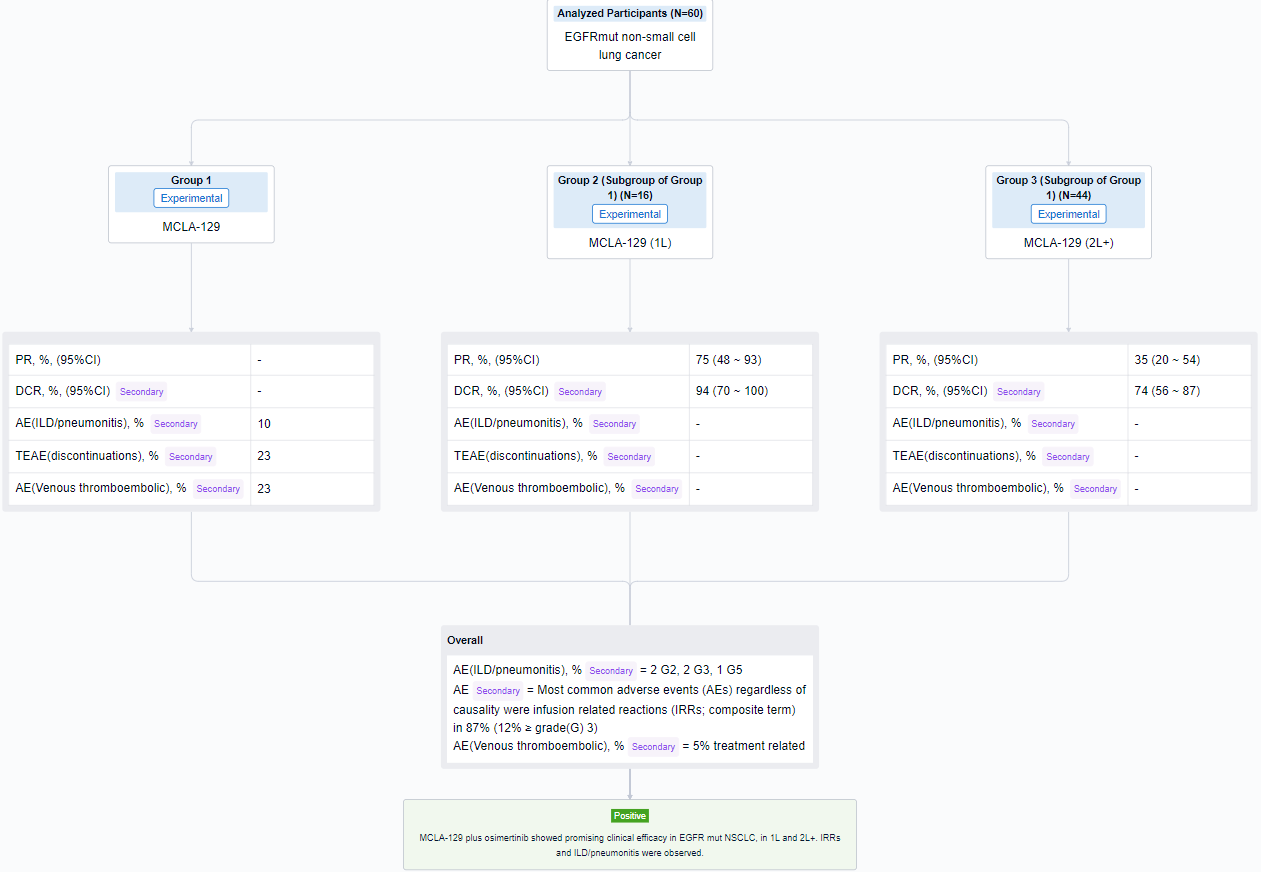
The result showed that As of 10 May 2023, 48 pts were treated (14/1L, 34/2L+). Median age was 56 y (range 40-80) and 61 y (35-81) respectively. All 2L+ pts received osimertinib in 1L/2L, 71% as the most recent therapy; 24% had prior chemotherapy. Median exposure duration was 10 wks (range 2-26) and 10 wks (range 2-38), with 13 (93%) and 23 pts (68%) continuing treatment at data cutoff for 1L and 2L+ respectively. In 1L, 8/10 evaluable pts had partial response (PR) (80%; 95% CI 44-98), 2 confirmed; all were ongoing. DCR was 90% (95% CI 56-100). In 2L+, 11/22 evaluable pts had PR (50%; 95% CI 28-72), 6 confirmed. 9/11 PRs were ongoing. DCR was 82% (95% CI 60-95). In 48 pts treated, the most common AEs regardless of causality were IRRs (composite term) in 85% of pts (6% ≥G3). Skin toxicity was common (75%; 4% G3). 5 pts (10%) had treatment-related interstitial lung disease (ILD)/pneumonitis (2 G2, 2 G3, 1 G5), 1 progressed to G5 after data cutoff.
It can be concluded that MCLA-129 plus osimertinib showed promising clinical efficacy in EGFRmut NSCLC, in 1L and 2L+. IRRs and ILD/pneumonitis were observed.
How to Easily View the Clinical Results Using Synapse Database?
If you want to know the other clinical results of popular conferences, please lick on the “Clinical Results” on the homepage of Patsnap Synapse, which provides multi-dimensional screening and filtering of drugs, indications, targets, companies, result evaluation, release date, popular conferences, etc. to help you quickly locate the data you need.
Select the clinical meeting you are interested in, such as ESMO. In the results, you can quickly locate the data you want to view by indication, phase and drug name.
A single result clearly shows important information such as registration number, phase, indication, Sponsor/Collaborator, biomarker, Trial number, dosing regimen and more.
If you would like to view more information about this result, you can go to the result detail page by clicking on the title.
Above the headings, we provide the original source of the outcome data. The basic information is supplemented with more information beyond the list, such as company, study. design, etc.
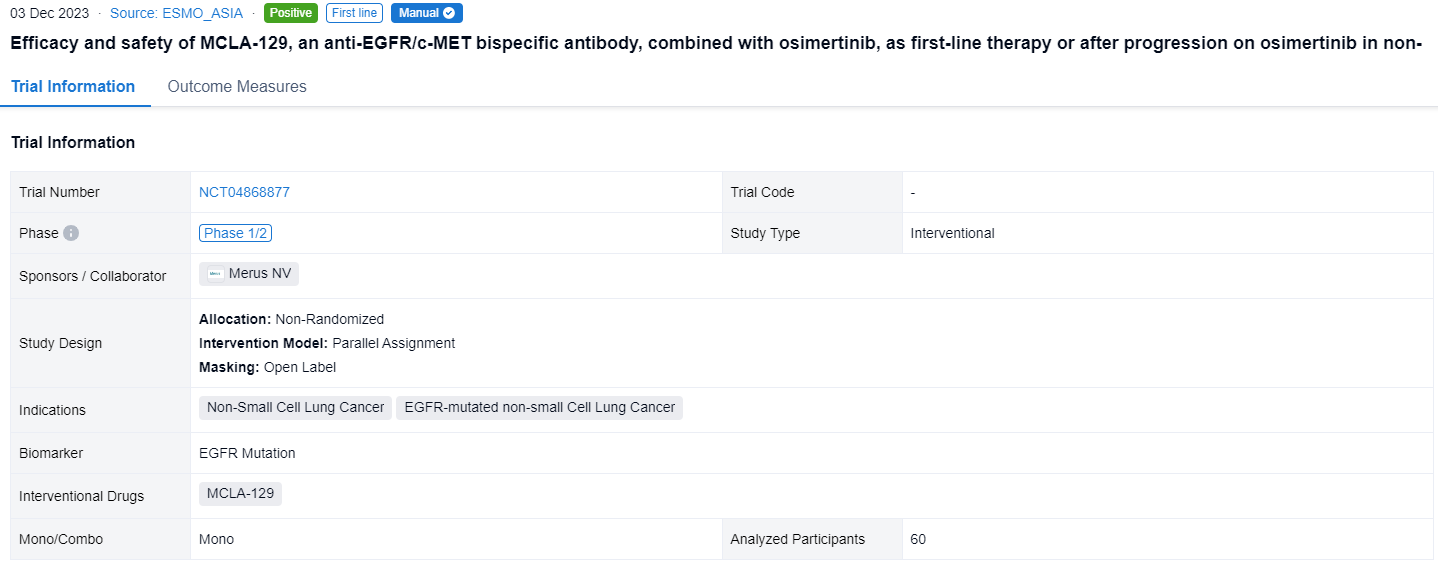
In the important Outcome Measures section, we provide both list and flowchart forms, which are convenient for you to overview the comparison group information and core indicator data.
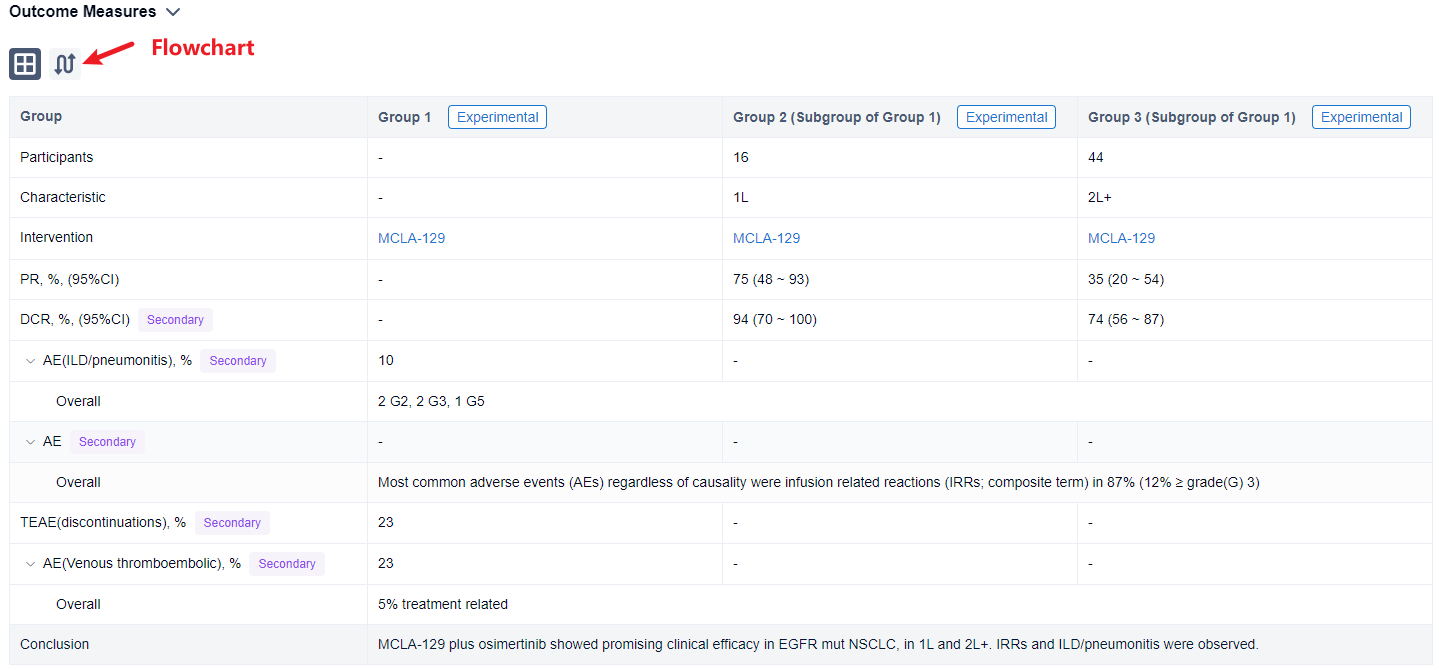
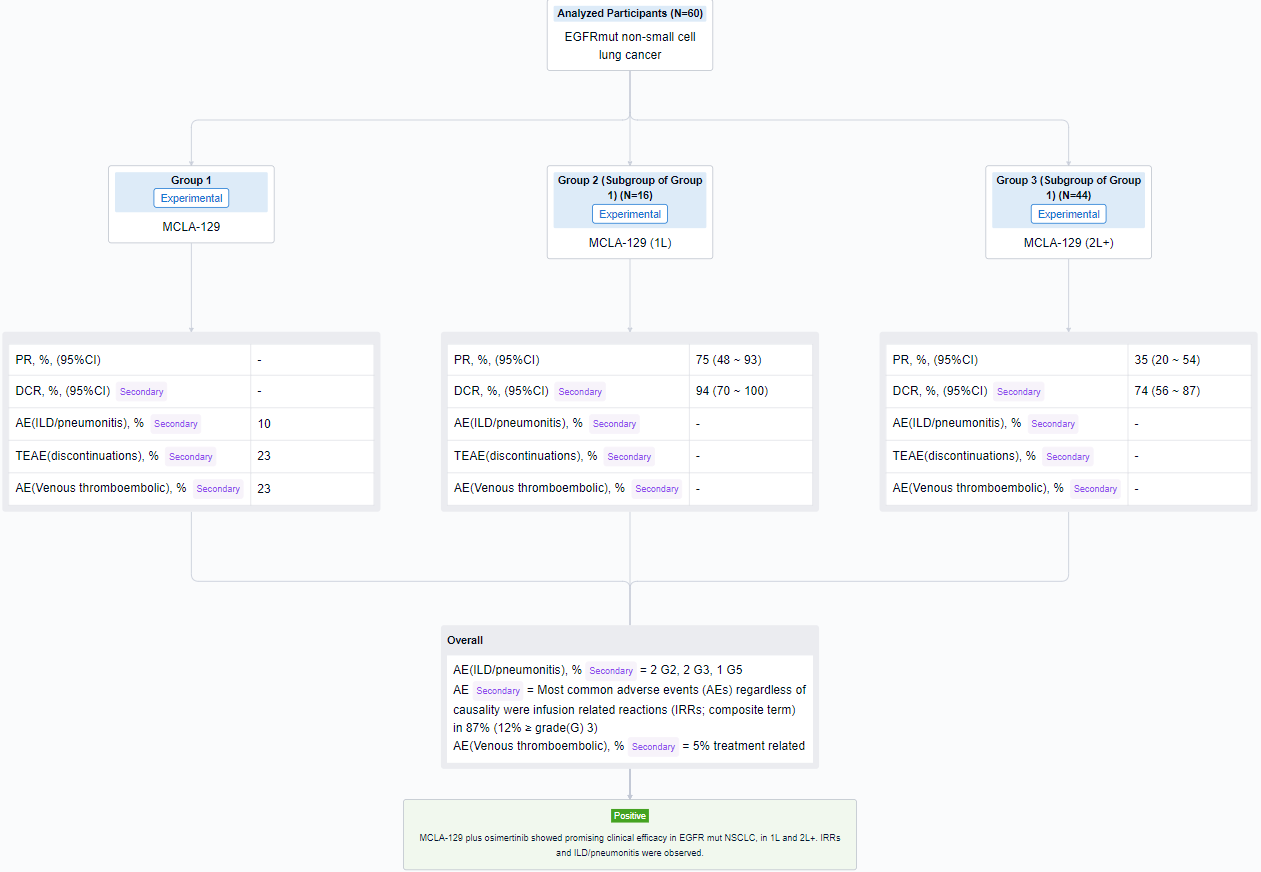
Finally, if you need to download these results, you can conveniently check the check boxes on the left side of the list, or directly click the "Export" button to download the data for personalized analysis and file sharing.
Click on the image below to embark on a brand new journey of drug discovery!
